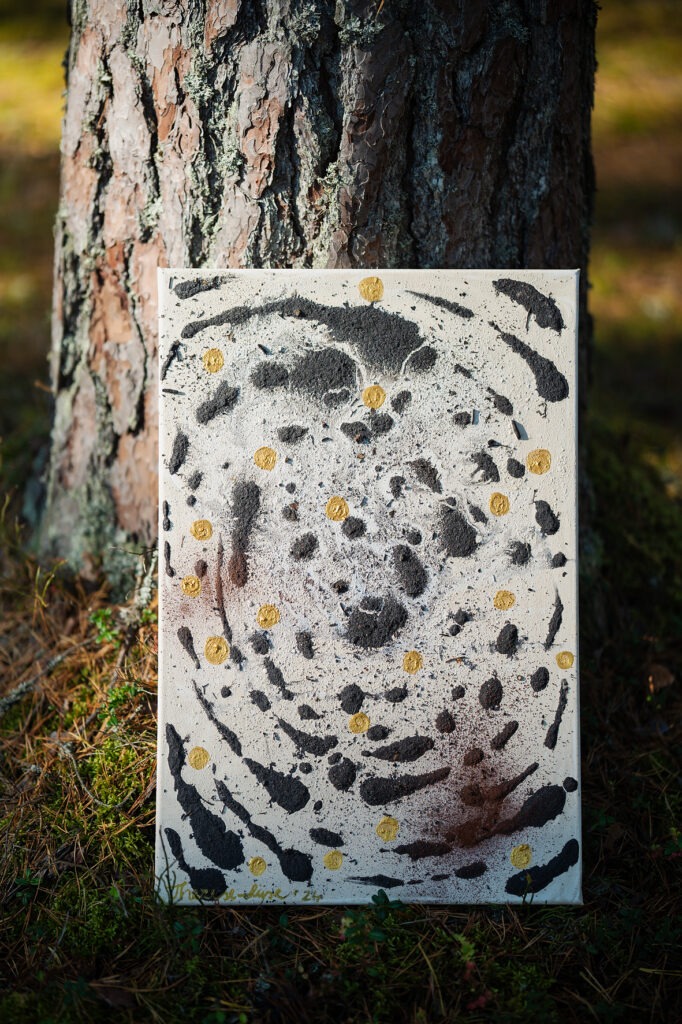Name: Specks of love 1 Size: 40×60 cm cm Materials: wood ashes, sand from Portugal, clay, water from levadas and soil from Madeira island, acrylic on canvas, Year: 2024 Frame: Unframed



100 years ago, wildfires were far less common in Portugal. Indeed, they have always occurred naturally to some degree, yet back then wildfires were less intense and widespread. In mid-20th century the average burned area was around 40,000 hectares per year but in recent years this has drastically increased. In 2017 ca 500,000…
Name: Specks of love 1 Size: 40×60 cm cm Materials: wood ashes, sand from Portugal, clay, water from levadas and soil from Madeira island, acrylic on canvas, Year: 2024 Frame: Unframed

